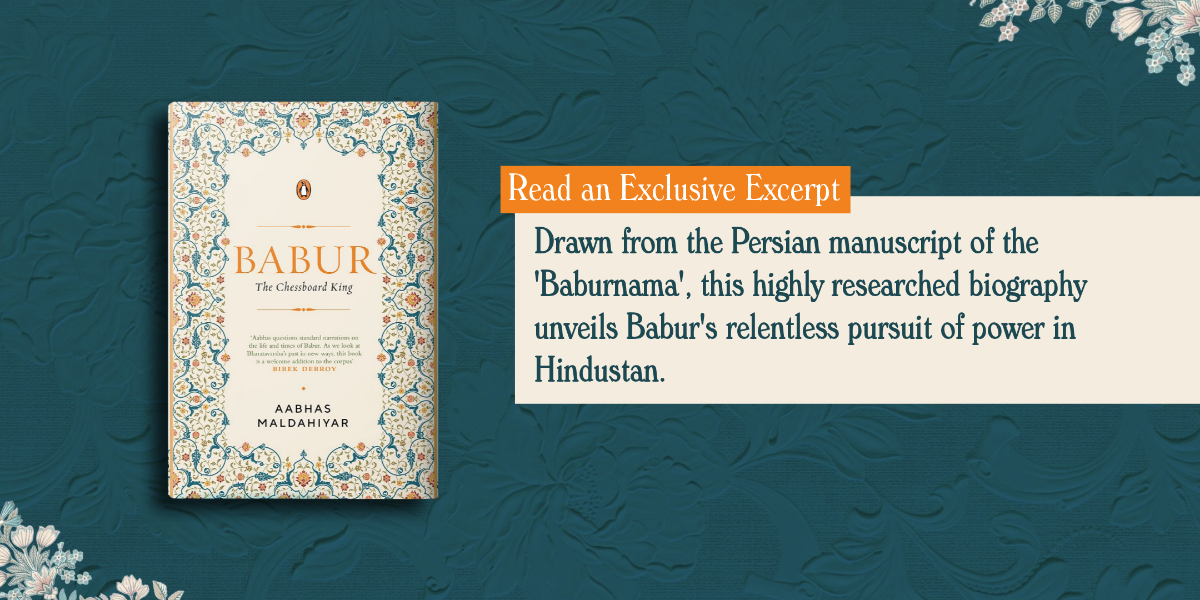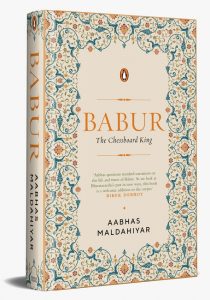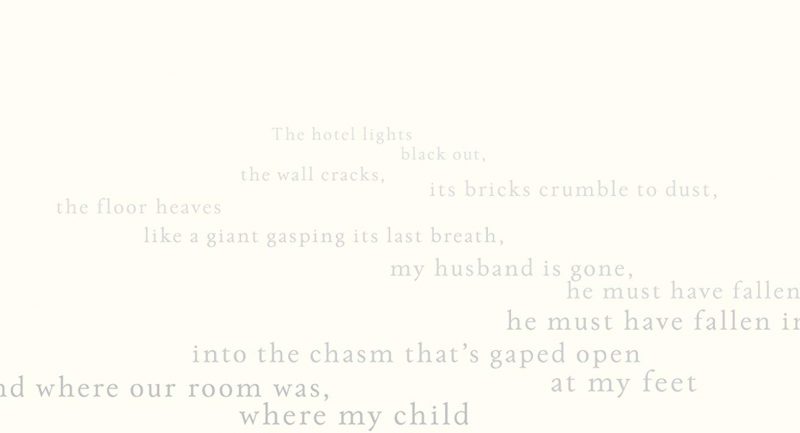
Embark on a journey through the tumultuous life of Babur, the visionary founder of the Timurid Empire in Hindustan, with Aabhas Maldahiyar‘s latest book, Babur: The Chessboard King. From his early struggles to his relentless pursuit of power, this highly researched biography paints a poignant picture of a multifaceted ruler known as ‘the chessboard king.’
Ready to unravel history?

***
On 8 July of ad 1499, commissaries were sent galloping off at once—a few to call the troops of horse riders and on foot in the nearby districts, and others to urge Qambar Ali to return, and the important ones who were away at home. The available warriors were told to arrange their weapons—shovels, axes and the best of war materials in the store. The horse riders and foot soldiers from the nearby districts made their way to Andijān. As they reached, those already in the district
and those who barged in were gathered. On 25 August of that year, Babur, relying on Allah, went to Hafiz Beg’s Charbagh and stayed there for four days to ensure perfect equipment arrangements for the battle ahead. Once that was done, an array of right, left and centre was formed which included the van, horse and foot. On 30 August, the army led by Babur began to march for Osh. He was determined to get Tambal. As the news of Babur approaching with such a might
reached Tambal, he rode towards Rabat-i-Sarhang, a sub-district in the north. That very night, Babur along with his troop dismounted in Lat-kint. The next day, when they were passing through Osh, news came that Tambal had gone to Andijān. Babur decided to march on for Auzkint. The men of Tambal reached in Andijān but the moats prevented their ladders from entering the fort from working. Babur’s raiders on the other hand retired after having overrun the area around Auzkint laying their hands on anything worth their trouble.
Tambal had stationed his younger brother, Khalil in Madu, with around 300 men. Madu was one of the forts of Osh, renowned for its strength. Babur and his men decided to turn to Khalil and see this strongest of the forts. The northern face of the Madu fort stood very high above the bed of a torrent. The arrows shot from this bed could barely reach the ramparts. On this very side was a water-thief, crafted like a lane with ramparts on both sides that ran from the fort to the water. On the other side, was the rising ground with its circumference surrounded by a big ditch. The torrent had helped those occupying the fort in carrying stones the size of mortars. As per Babur’s knowledge, no fort of such class was ever defended with stones of such large size as those taken into Madu. A large stone was dropped on Kitta Beg’s elder brother, Abdul Qasim Kohbur as he went under the ramparts. He came down rolling, without once getting to his feet, from that great height down to the foot of the glacis. And then a stone flung from a double waterway hit Yar Ali Balal in his head leaving it trepanned. The wrath of falling stones spelled disaster for Babur’s men. Many of them perished. However, Babur’s men made a great comeback by facing the showering stones. The assault began with the next dawn, and they kept fighting till the evening. They had lost the water-thief and hence could not continue the fight the next morning. They came out and sought to agree on the terms. Babur took around four scores of Khalil’s men and sent them to Andijān for safekeeping as some of his begs and household were prisoners in their hands. The Madu affair turned out very well for Babur.
After having finished this campaign successfully, Babur and his men went to Unju Tupa, a village in Osh, and dismounted there. On the other hand, unsuccessful Tambal retired from Andijān and went to sub-district Rabat-i-Sarhang. He dismounted in the village called Ab-i-Khān. Now, Babur and Tambal were merely five miles away from each other. But despite such proximity, there was no war or battle for around six weeks. But peace is not eternal.
The foragers on both sides were at play with each passing day. While the people of Tambal could see Babur’s camp, ditches were dug all around as a sign of precaution. Babur also made his soldiers go out in their mail along the ditch. Despite such watchfulness, a night alarm was given every two or three days, and the cry to keep arms up. But one eventful day, when Sayyidi Beg Taghai had gone out with the foragers, the foe (Tambal’s forces) came up suddenly in massive
strength taking him a prisoner.
***
Get your copy of Babur by Aabhas Maldahiyar wherever books are sold.









